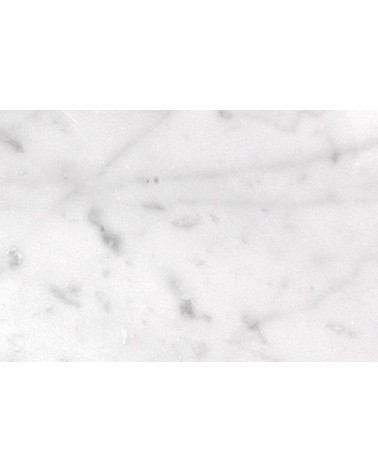
marble Ordinario
All prices incl. VAT, plus shipping costs.
For deliveries to countries other than Germany
the final prices may change in the checkout.
MORE INFO
We deliver fast - Postage free from 150 € (DE) - 60 days right of return - mail@bildhau.de - Tel.: +49 (0)221-99874700


All prices incl. VAT, plus shipping costs.
For deliveries to countries other than Germany
the final prices may change in the checkout.
MORE INFO
Aufgrund seiner fein-kristallinen Struktur, die kaum gröber ist als die des Statuario Venato, ist der Ordinario leicht zu schlagen. Feine Ausarbeitungen sind möglich. Die Kristallstruktur und seine Homogenität machen den Marmor sehr gut polierbar.
TECHNISCHE ANGABEN
| Herkunft | Italien |
| Härtegrad Mohs | 3 - 3,5 |
| Aussehen | weiß-grau, mit grauen Sprenkeln und Adern |
| Struktur | fein-kristallin |
| Dichte | 2,75 kg/dm³ |
BEARBEITUNG
Ordinario kann sehr gut von Hand mit Schmiedestahl-Meißeln mit Schlägelkopf (Spitzeisen, Zahneisen, Flacheisen etc.) in Kombination mit einem Eisenfäustel bearbeitet werden. Weicherer Marmor lässt sich auch mit Schmiedestahl-Raspeln, härterer Marmor mit Hartmetall-Raspeln und Diamantfeilen bearbeiten. Marmor kann sehr gut auch von Hand geschliffen werden bis hin zur Hochglanz-Politur. In den italienischen Bildhauer-Werkstätten wird Marmor vor allem mit Druckluftwerkzeugen bearbeitet, mit denen sehr exakt geformt werden kann. Auch der Schliff kann maschinell erfolgen.
Skulpturen aus Ordinario eignen sich vor allem für die Aufstellung im Innenraum. Je nach Beschaffenheit des Ordinario eignet er sich auch für Skulpturen für den Außenraum. Gegebenenfalls ist der Stein mit einer Imprägnierung zu behandeln.
WEITERE INFOS
Ordinario ist ein weiß-grauer Marmor mit Anreicherungen von Graphit, der über Jahrmillionen durch Metamorphose aus organischen Einschlüssen entstanden ist, die das Gestein in Form von grauen Adern, Sprenkeln und Wolken durchziehen. Er verfügt über eine Korngröße von ca. 0,5 mm. Marmor ist ein rund 140 Mio Jahre altes Metamorphit-Gestein.
Ordinario ist eine sehr verbreitete Marmorsorte und wird ebenso wie der Statuario Venato in den Apuanischen Alpen in der Nähe von Carrara gewonnen. Marmor ist vor 140 Millionen Jahren durch Metamorphose aus Kalkstein mit organischen Einschlüssen (Tier- und Pflanzenreste) entstanden. Druck und hohe Temperaturen haben den Kalkstein in tieferen Schichten der Erdkruste in Jahrmillionen zu Marmor kristallisiert.
Hier finden Sie interessante Informationen zum Berechnen des Gewichtes eines Bildhauersteines.